Fossils' surroundings shed light on extinction and environmental changes
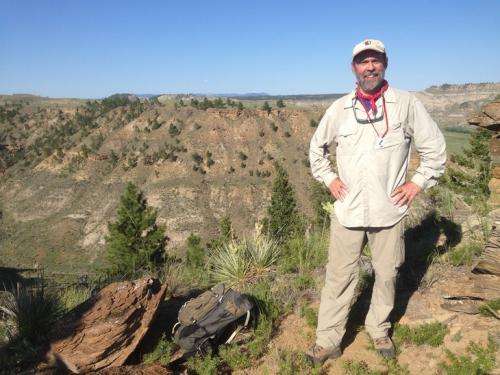
Paleobiologist Mark Patzkowsky remembers when the insight that would set the direction of his career snapped into focus.
It was in the late-1980s, during a casual conversation with his office mate, Steve Holland. They were graduate students at the University of Chicago and often did fieldwork together. Both studied marine organisms whose fossils were preserved in sedimentary layers that are now exposed at the surface. Mark's target layer was about 10 million years older than Steve's, so when they went collecting in the same area, Mark scoured the valleys while Steve searched high on the hillsides.
That summer they had collected fossils in the Appalachian Mountains of Tennessee and Virginia. At the time, neither paid much attention to what the other was finding, because they didn't expect much overlap. Their sample areas were separated by dozens of meters and millions of years' worth of sediments. Back at home a few months later, they started comparing notes.
"Steve says, 'Wow, at this interval of time there's all these species that just appear,' " says Patzkowsky. "And he starts listing them, and I'm like, 'What was that?!' "
It turned out that Holland's haul included many of the same groups Patzkowsky had found in his much older study site—and that were not found in the intervening sediments. The two friends looked more closely at both collections and found that the carbonate rocks in both their sampling areas were characteristic of warm-water environments, while those in between were typical of cool water. They concluded that the original warm habitat had cooled significantly, driving out the earlier residents and allowing other species to move in. Millions of years later, the area warmed again, and the original species returned. If Patzkowsky and Holland hadn't compared their samples and carefully examined the sediments they were embedded in, they would have missed the larger-scale pattern of environmental change.
In the years since then, Patzkowsky, Holland, and a handful of other geoscientists have explored how the types of fossils found in a given location are influenced by the way the sediments containing them accumulated.
"The stratigraphic record has a very specific architecture," Patzkowsky explains. "It's not a random assortment of sediments. It's put together in very specific ways, and that's one important determinant of where fossils are found and is the first step toward understanding their ecology and evolution."
Fossils on the bias
Trying to understand the fossil record is always challenging, like putting together a puzzle when you don't even know how big it is or whether you have all the pieces.
"The process of becoming a fossil is filtered through sedimentation processes and decay processes and chemical processes and all kinds of things that act to either destroy tissue or remove things or not even allow them to accumulate in the first place," says Patzkowsky, who is now a professor of geosciences at Penn State. "We're left with what we see on the other side, and then to try to reconstruct what was there."
He says paleobiologists tend to get caught up in figuring out the "bias" of the geologic record—imperfections that can under- or over-represent certain kinds of organisms or structures. For example, the carcasses of animals that die along a river might be washed downstream, coming to rest in a place that does not resemble their original habitat. Such bias concerns mainly what happened to the remains after the organism died, and it can be somewhat random.
Stratigraphic architecture, on the other hand, "imparts a pattern" on the fossil record that can tell us a lot about the habitats the organisms were living in—and Patzkowsky thinks it should be basic homework for the fossil hunter. Once you understand the architecture in a given area, he says, you can map it to pinpoint the most promising sites for collecting, the way a petroleum geologist can predict, based on detailed knowledge of deep sediments, where a reservoir of oil is likely to be.
"Our approach has been to really look at the diversity of the fossils and their abundances in very close relationship with the rocks that they're entombed in and the environments that those rocks represent," he says. "We're talking about going out in the field and measuring and describing and interpreting the rocks, in terms of the environments in which they were deposited, and understanding how they accumulated, and then collecting the fossils within that context."
Discover the latest in science, tech, and space with over 100,000 subscribers who rely on Phys.org for daily insights. Sign up for our free newsletter and get updates on breakthroughs, innovations, and research that matter—daily or weekly.
Rocks of ages
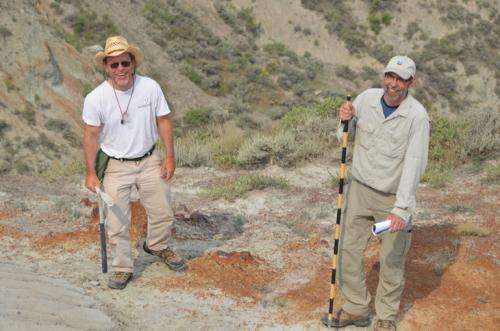
Evolution and ecology also influence where fossils are found, of course—evolution generally showing up in the vertical position of a fossil and ecology in its location in the horizontal plane—but in Patzkowsky's view, in order to understand the evolution and ecology, you first need to take the stratigraphic architecture into account.
For example, lakes and seas are not static bowls whose borders don't change over time. Their shorelines are constantly shifting, tending to fill in toward the center. How deep was the water at a given spot at a given time? How salty was it? Did a river mouth empty nearby, bringing in fresh water? What was the water temperature? Were the currents strong or lazy?
But the fossil record is usually presented as a vertical succession of strata, of layers, he says, citing the familiar charts of geologic time. Over very long intervals, such as the Ordovician Period he studies, which lasted from about 489 million years ago to about 444 million years ago, that vertical succession is an accurate, although incomplete, index of geologic time and evolutionary history. But over smaller time intervals, such as a few million years, an outcrop that appears to be all one layer might actually include different rock types that represent very different ancient environments.
Conventional paleobiology assumes that differences in fossils at different vertical levels indicate evolution of the organisms. This ignores the fact that every species lived in an environment that was changing, says Patzkowsky. Some species adapted to the new conditions and evolved into new species. Some moved to a place where their preferred habitat still existed. Some couldn't evolve fast enough and couldn't move (or couldn't find suitable habitat), and died out in that area.
Gone for good?
Questions about extinction run in Patzkowsky's academic blood. His graduate advisor, Jack Sepkoski, was responsible for compiling the first database that paleobiologists used to identify and study the "Big Five" mass extinctions that occurred in the last 540 million years.
There's no question that dinosaurs (other than birds) died out over a relatively short time span, but sometimes paleobiologists are too quick to conclude something went extinct at a given time and place, says Patzkowsky.
He says that when it comes to extinctions in specific locales, a close look at the sedimentary architecture often suggests a different interpretation.
"When we go to some place where there seemed to be a mass extinction and look in real detail at one stratigraphic section, we see all these environmental changes and we see that there are taxa present and then they go away," he says. "But because the environment was changing, we need to go somewhere else where that environment existed after this point in time to see if they're really gone."
Another situation ripe for misinterpretation occurs in places where a layer of sediment eroded for an extended time, followed by another long period of sedimentation. In such a case, the younger sediments (and dead organisms destined to become fossils) were deposited directly on top of much older sediments. Species living in the area may have evolved gradually during the entire time, but in the fossil record the changes will look abrupt.
"One could easily interpret this as being due to a short, intense interval of extinction and speciation, when what really happened was gradual change in species through time," says Patzkowsky, "but with the time gap, the gradual change is not seen."
Seeing the future in the past
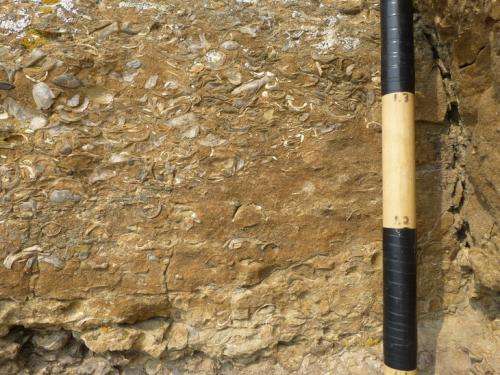
In 2012, Patzkowsky and Holland distilled about 30 years of work by themselves and other scientists in the first book-length treatment of the field. The ideas they present in "Stratigraphic Paleobiology: Understanding the Distribution of Fossil Taxa in Time and Space" (University of Chicago Press) are beginning to make inroads in traditional paleobiology, says Patzkowsky, but there's still a ways to go.
"Part of the problem is that this blends sedimentary geology and paleobiology," he says. "Those are related fields and there should be a lot of cross-pollination between them, but it's really hard to pull them together. The fields have traditionally had different interests."
Still, he sees progress, especially among the next generation of scientists. In the summer of 2014, under the sponsorship of The Paleontological Society, he and Holland taught a field course on their methods for graduate students from around the country.
"There is a growing interest in understanding the ecology of ancient species, and how those species changed through time," he says. "One of the lessons that we learn from Earth history is the importance of environmental change and how that affects life. Looking at the fossil record is one of the few places we can really do that."
Questions about how ancient life forms responded to environmental change have taken on new urgency in recent years because of concern over human-generated changes to the planet. Levels of carbon dioxide now hover around 400 parts per million (preindustrial levels were under 300 ppm) and global temperatures are on the rise. Patzkowsky says ecologists can do in-depth studies of present-day habitats and organisms—a mere snapshot in geological time—and then try to predict what might happen to those organisms as their habitats change.
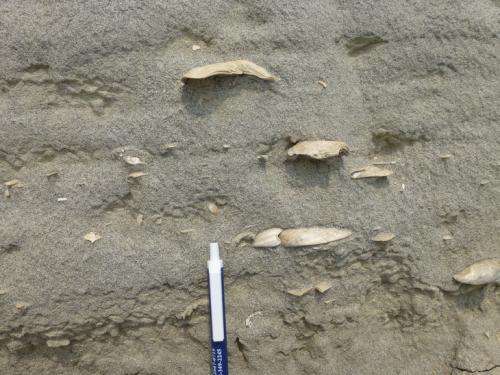
But there's another option, he says, because this is not the first time Earth and its residents have experienced similar conditions.
"The Pliocene [1.6 to 5 million years ago] was the last time that CO2 levels were at 400 parts per million. We're now moving into a Pliocene world, at least from the point of view of ppm CO2."
So what will happen to today's ecosystems and organisms as the climate warms?
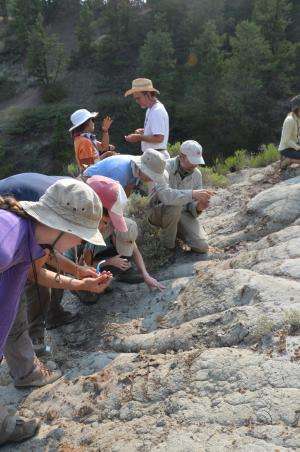
"It's a question we can really get at in the fossil record," says Patzkowsky. Fossil organisms and the sediments they're embedded in can show us what actually did happen before, during, and after major environmental changes in the past.
"But if you're going to look at the fossil record," he says, "you need to look at the stratigraphic architecture first."
Provided by Pennsylvania State University



















